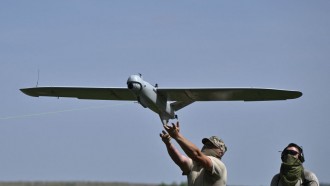Next week, students in Texas and Georgia will have the unique chance to hear from NASA astronauts currently stationed on the International Space Station (ISS). Live streaming of these two space-to-Earth communications is planned for NASA Television, the NASA app, and the organization's website.
NASA astronauts Frank Rubio and Jasmin Moghbeli will react to taped questions from kids in Olmito, Texas, on September 6 at 10:05 a.m. EDT.
Moghbeli and Rubio will respond again to pre-recorded inquiries on September 7 at 10:25 a.m. EDT, this time from students at Dames Ferry Elementary School in Gray, Georgia. The school wants to introduce STEM and aerospace careers to rural children via this event, according to a Mirage report.
The Vital Role of ISS
For almost 22 years, astronauts have lived and worked aboard the International Space Station (ISS), doing scientific research, testing new technology, and improving exploratory skills. According to NASA, they communicate with the space agency's Houston Mission Control Center through the SCaN Near Space Network.
In addition to helping the people of Earth, research and technical improvements made onboard the ISS also build the groundwork for further exploration.
Read Also: Artists Challenge AI Image-Generators in Lawsuit Over Unauthorized Use of Work
#Crew6 is heading home soon, wrapping up a six-month scientific mission filled with @ISS_Research to keep humans healthy—in space and back on Earth.
— NASA (@NASA) August 30, 2023
See snapshots of @Astro_Woody and the rest of the Crew-6 astronauts doing science on the @Space_Station: https://t.co/lxxJtXhWMn pic.twitter.com/LSAyXbWFMS
Astronauts are sent to the Moon as part of NASA's Artemis program to be ready for future manned missions to Mars. NASA wants to ensure that the US remains the world leader in space exploration by motivating the Artemis Generation.
NASA Captures Image of Russia's Luna-25 Mission Crash
In related news, the Russian Luna-25 mission crashed into the Moon last month, producing a prominent crater 10 meters across.
Photographs taken by NASA's Lunar Reconnaissance Orbiter (LRO) spacecraft helped to identify the crater. The US space agency attributed it to the impact of the Luna-25 spacecraft crash.
"Since this new crater is close to the Luna-25 estimated impact point, the LRO team concludes it is likely to be from that mission, rather than a natural impactor," according to NASA, as quoted by ABC.
The inability to successfully land on the Moon's south pole caused Luna-25, Russia's first lunar mission in 47 years, to crash on August 19.
Despite this setback, the Kremlin reiterated its dedication to Russia's space exploration program.
Although lunar missions are challenging, the Luna-25 disaster was a major setback for the Russian space program, which has declined since the Cold War.
In contrast, India's Chandrayaan-3 spacecraft successfully landed on the moon days later.
Related Article: India's Chandrayaan-3 Lunar Rover Did a 360 Spin on the Moon, ISRO Says it Is Like a 'Child'










